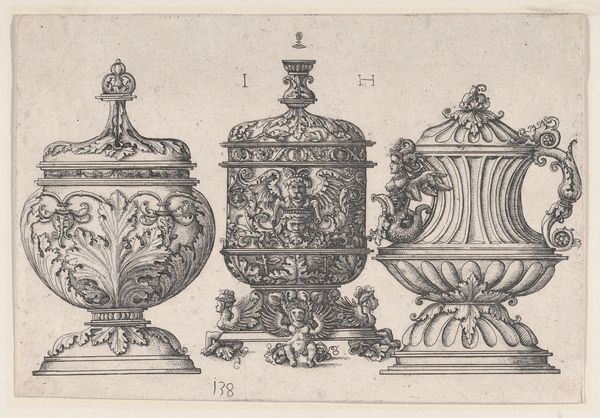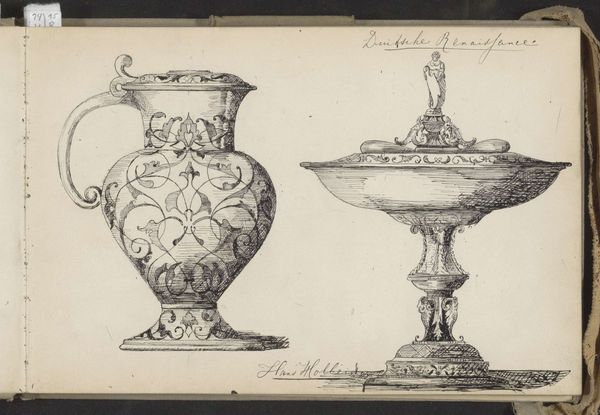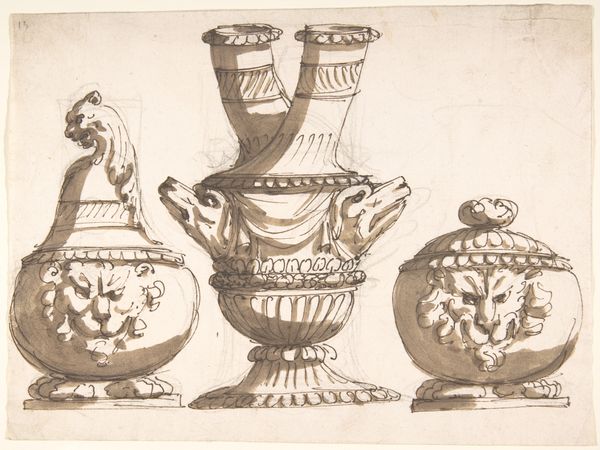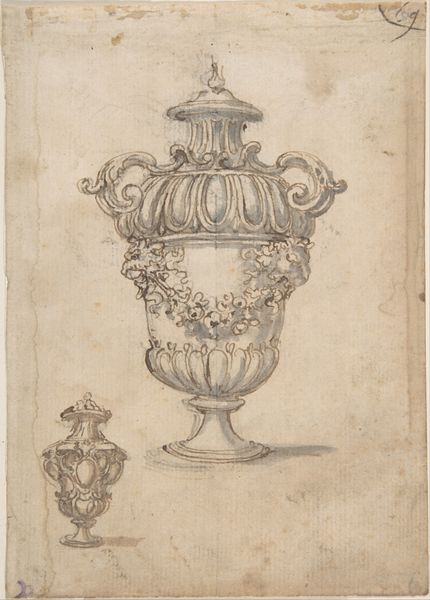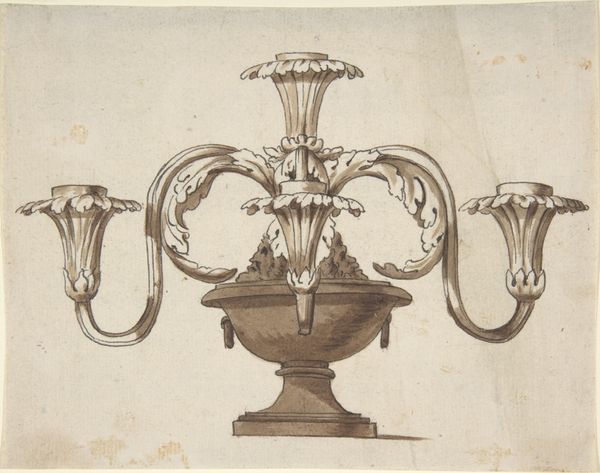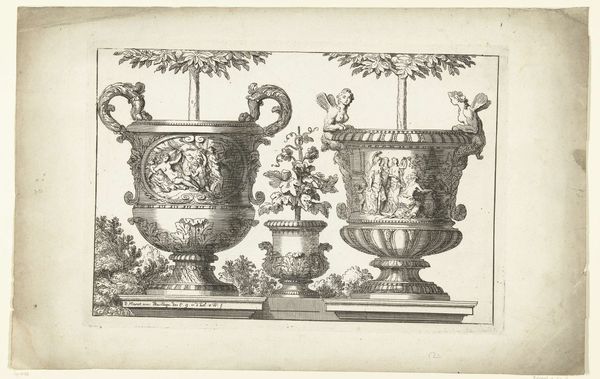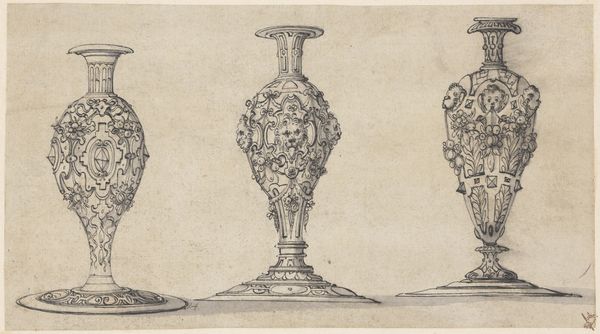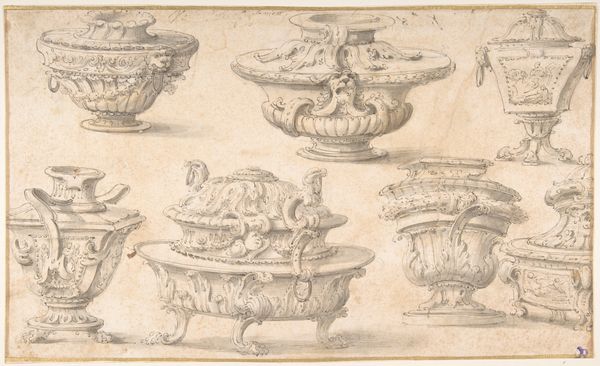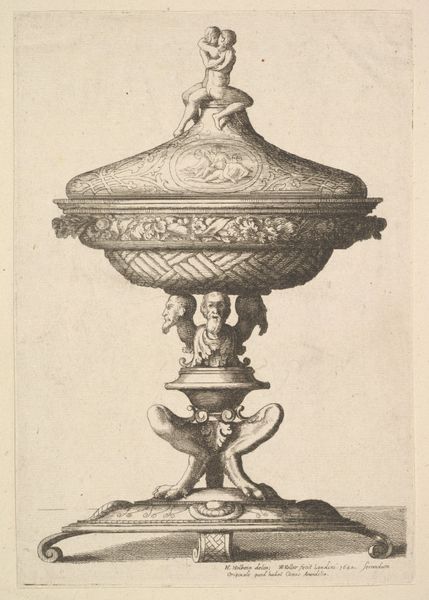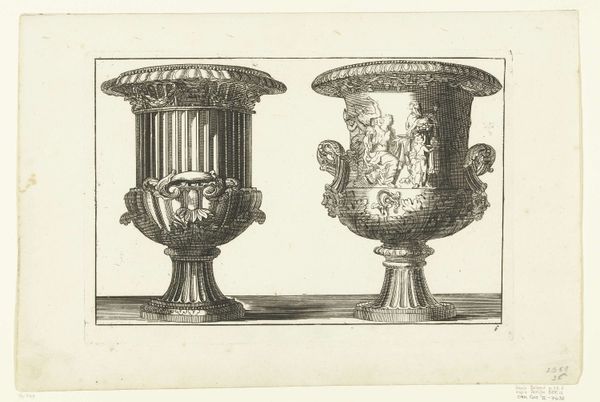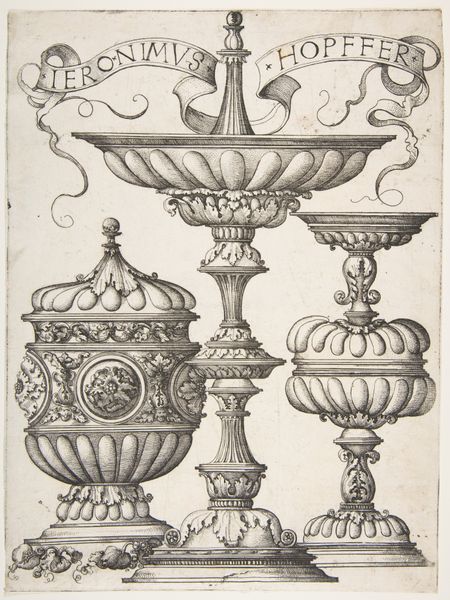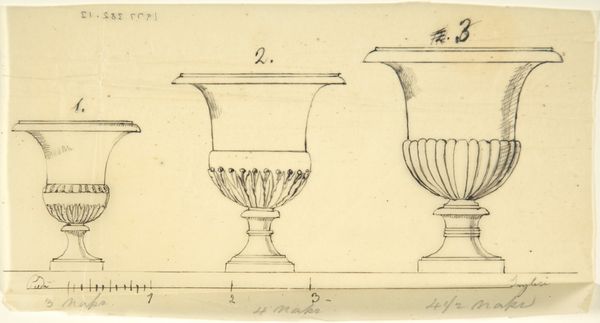
Cisterns, from Chippendale Drawings, Vol. II 1760
0:00
0:00
drawing, coloured-pencil, print, watercolor
#
drawing
#
coloured-pencil
#
water colours
# print
#
form
#
watercolor
#
coloured pencil
#
decorative-art
#
rococo
Dimensions: sheet: 8 3/8 x 12 5/8 in. (21.4 x 32 cm)
Copyright: Public Domain
Editor: Here we have "Cisterns, from Chippendale Drawings, Vol. II" from 1760, rendered in watercolor and colored pencil. What strikes me most is how these everyday objects are elevated into ornate designs. How do you interpret this work through a materialist lens? Curator: It's crucial to consider what "everyday" meant in 1760. These cisterns weren’t for everyone. They signify access to resources – water, certainly, but also the financial capital needed to commission such extravagant designs. The drawing itself functions as a tool of production. Editor: So, you're saying it's not just about the finished product, but also the entire system that made it possible? Curator: Precisely. Consider Chippendale’s workshop: artisans, apprentices, each contributing their labor. The drawing is a blueprint, dictating the use of specific materials – likely silver or some other precious metal, requiring mining, refining, and skilled craftsmanship. Each stage involves human effort and resources extracted from the earth. Editor: The Rococo style suggests a playful decadence. Does this contribute to the materialist interpretation? Curator: Absolutely. The excessive ornamentation isn't just aesthetic; it's a visual display of wealth and power. It points to the networks of trade, the exploitation of labor, and the consumption habits that sustained the aristocracy. How does Chippendale challenge or reinforce social hierarchies of production with these objects? Editor: So, viewing these cisterns purely for their aesthetic value obscures the socioeconomic realities of their creation. Curator: Exactly. It’s about tracing the journey of these objects, from raw materials to finished products, and acknowledging the human labor embedded within them. Editor: That makes me think about where these objects would be placed in a home – what servants would have had to manage them… Curator: Precisely! You begin to unpack not just an aesthetic object, but the social relations it represents. What new insights have we gained here? Editor: Thinking about these cisterns as products of specific labor and resources really shifts my perspective from appreciating beauty to understanding a system. Curator: It’s about bridging the gap between art history and social history, recognizing that art doesn’t exist in a vacuum but is intertwined with material conditions.
Comments
No comments
Be the first to comment and join the conversation on the ultimate creative platform.
